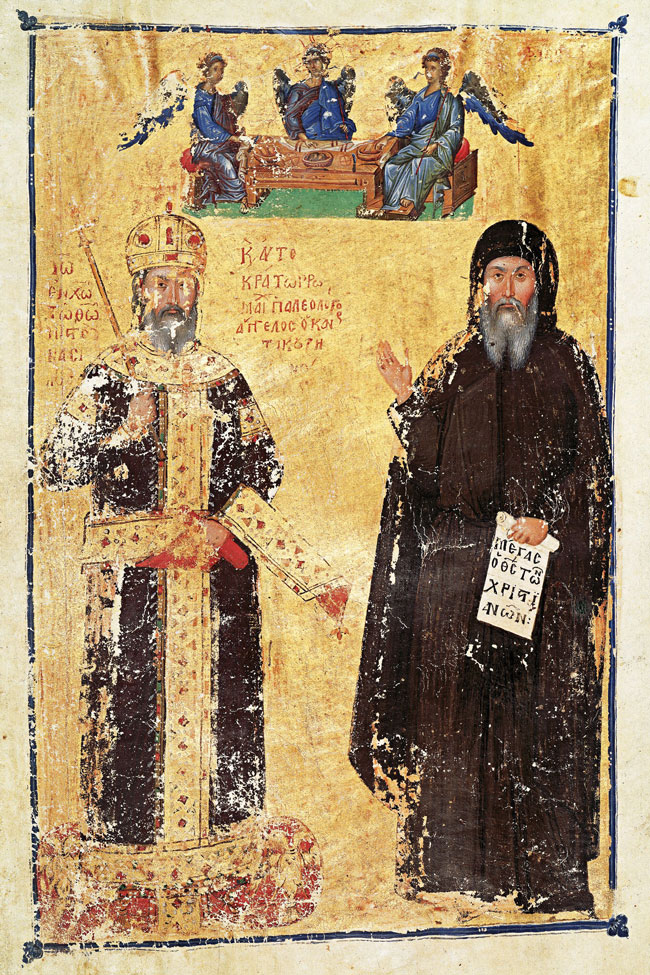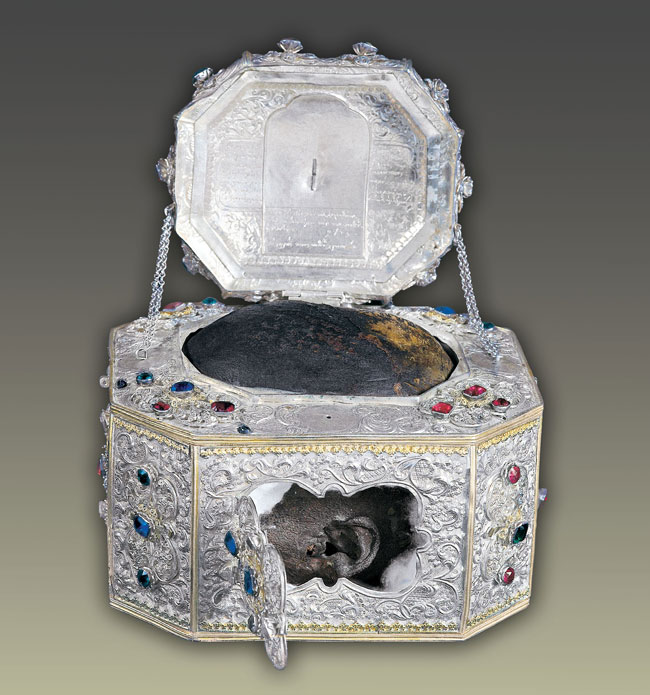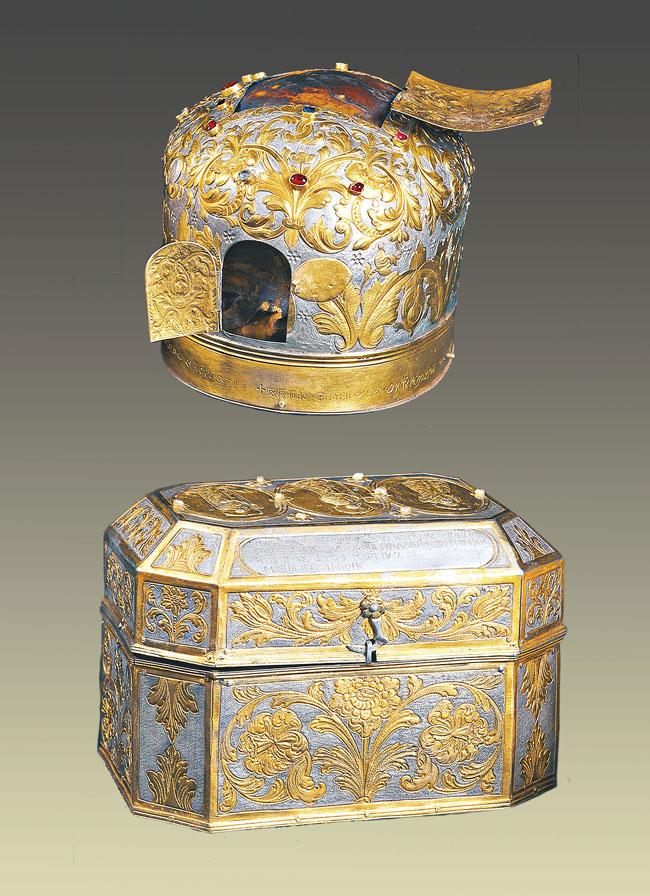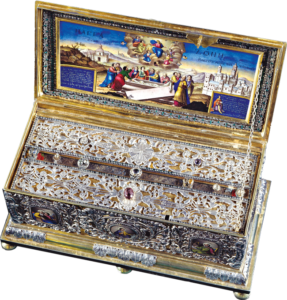John VI Cantacuzenus, Emperor of Byzantium (1292–1383)
The Emperor of Byzantium John VI Cantacuzenus had direct ties with the Holy Monastery of Vatopaidi and is commemorated among its founders and chief patrons. As it appears in the Life of Saint Savvas, the fool-for-Christ of Vatopaidi, Cantacuzenus had Savvas as his spiritual father. From early on he harbored a desire to settle as monk at the Monastery. He visited there in 1341 and made preparations from that time for his arrival with the funding of buildings and other favors. Professor Eric Lambertz writes that probably the richest donation of manuscripts ever given to a monastery of the Holy Mountain was that of Cantacuzenus to Vatopaidi. This donation of books includes at least 26 brilliant codices, which it appears were written and decorated for Cantacuzenus himself and came from his own personal library. He also donated a portion of the Holy Belt of the Virgin Mary to the Monastery, as well as the heads of Saint John Chrysostom and Saint Gregory the Theologian. He sat on the imperial throne from 1347 to 1354. In December of 1354 he became a monk with the name Ioasaph at the Monastery of Mangana in Constantinople. He did not go to Vatopaidi, since the new emperor, John V, needed him as his advisor and mediator in many important affairs of the empire. Cantacuzenus proved to be a formidable theologian and polemicist for hesychasm in the anti-hesychast controversy. He was the only one who wrote words of objection to “the wise Ioannis Kyparissiotis”, the major anti-Palamist after the death of Saint Gregory Palamas. During the period of 1363–1369, Cantacuzenus must have stayed at Vatopaidi Monastery for greater quiet and immersion in his writing. He died on 15 June 1383 at Mystras.

John Cantacuzenus as emperor and as a monk. Cod.171, f. 123r, National Library of Paris. 1370–1375.

The head of St John Chrysostom, gift of Emperor John Cantacuzenus to the Holy Monastery of Vatopaidi.

The head of St Gregory the Theologian, gift of Emperor John Cantacuzenus to the Holy
Monastery of Vatopaidi. The case for the relic of the Saint was made in Wallachia in 1709.


